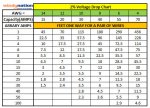parsonswife
Veteran Member
We now have
(4) 310Watt solar panels IMPP 8.03am / vmpp 37.02 72 cells
(3) Trojan L16 batteries and
MTTP Controller and 3000watt inverter
Forgive me if I am not asking the right questions but this is whats going through my head tonight.
So the question is how much power will we have (assuming sunny days). We plan on powering a pellet stove auger and fan that runs at 2.08 amps and (4.8 amp start up power but we an disconnect the igniter if we need to).
DH want to know if we will be able to use the laptop, and a few LED lights also at the same time as the stove. I know the frig and the freezer are not possible but would a mini fridge be possible?
If there is no sunny days can we recharge the batteries with our propane genny and in general how long the genny would have to run to charge them?
I am helpless with the math questions and understanding amps vs watt vs volts.
Input would be appreciated
(4) 310Watt solar panels IMPP 8.03am / vmpp 37.02 72 cells
(3) Trojan L16 batteries and
MTTP Controller and 3000watt inverter
Forgive me if I am not asking the right questions but this is whats going through my head tonight.
So the question is how much power will we have (assuming sunny days). We plan on powering a pellet stove auger and fan that runs at 2.08 amps and (4.8 amp start up power but we an disconnect the igniter if we need to).
DH want to know if we will be able to use the laptop, and a few LED lights also at the same time as the stove. I know the frig and the freezer are not possible but would a mini fridge be possible?
If there is no sunny days can we recharge the batteries with our propane genny and in general how long the genny would have to run to charge them?
I am helpless with the math questions and understanding amps vs watt vs volts.
Input would be appreciated


